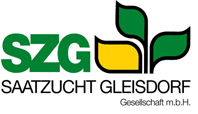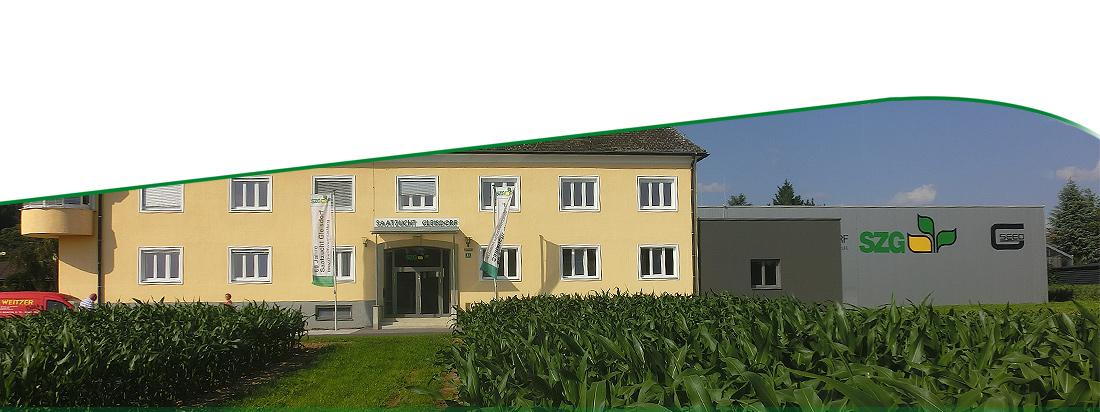History of the Gleisdorf Seed Breeding Institute
1948 - 1957
 When maize cultivation was started in the leased grounds of castle Kornberg in 1948, the highest priority was given to the boosting of food production and its distribution to the poverty stricken populace following the Second World War. When maize cultivation was started in the leased grounds of castle Kornberg in 1948, the highest priority was given to the boosting of food production and its distribution to the poverty stricken populace following the Second World War.The persons who started this, chamber office director privy councillor DI (graduate engineer) Heinrich Hornich, head of the plant cultivation department of the chamber of agriculture OLR DI Walter Czerwinka director and DI Fritz Mayerl, who was responsible for maize breeding, recognised the opportunities for maize cultivation and decided to set up their own seed breeding institute in Styria. |
1968 - 1977
 Millet, sirk, runner beans, tobacco, field beans and oil pumpkin were included in the breeding work and developed alongside the main breeding focus of developing maize hybrids. After the licencing of the field bean variety "Kornberger Kleinkörnige (small seeded)" in 1955, the "Gleisdorfer Ölkürbis (oil pumpkin)" oil pumpkin variety was licenced in 1969. Millet, sirk, runner beans, tobacco, field beans and oil pumpkin were included in the breeding work and developed alongside the main breeding focus of developing maize hybrids. After the licencing of the field bean variety "Kornberger Kleinkörnige (small seeded)" in 1955, the "Gleisdorfer Ölkürbis (oil pumpkin)" oil pumpkin variety was licenced in 1969.In those days, the demand for hybrid maize seeds for the Austrian market was approximately 4000 tons - 50% of this originated from Gleisdorf varieties. The first licencings of Gleisdorf varieties for the international market took place in Germany, Yugoslavia and Great Britain. |
1978 - 1987
 The ownership structure of the Gleisdorf Seed Breeding Institute was organized in a new way in 1984: the breeding enterprise, which until then had been in the sole ownership of the Styrian Chamber of agriculture, was joined by the cooperative society as the majority owner. The ownership structure of the Gleisdorf Seed Breeding Institute was organized in a new way in 1984: the breeding enterprise, which until then had been in the sole ownership of the Styrian Chamber of agriculture, was joined by the cooperative society as the majority owner.The development of new efficient Gleisdorf varieties stood at the heart of the cultivation program. Following the retirement of DI Rath, DI Johanna Winkler assumed the main responsibility for oil pumpkin, field beans, soya beans and special crops. DI Johann Plienegger initiated a new maize cultivation program, founded on the latest accepted breeding methods. |
1988 - 1997
 A result of the extended field bean breeding program was the licencing of the white blossoming, low tannin field bean variety, Gloria in 1993. This and other varieties were successfully sold in the Austrian, German, French and Scandinavian markets. The maize varieties, Levanta, Monika and Musinia, which were licenced from 1992 to 1997, were equally successful. A result of the extended field bean breeding program was the licencing of the white blossoming, low tannin field bean variety, Gloria in 1993. This and other varieties were successfully sold in the Austrian, German, French and Scandinavian markets. The maize varieties, Levanta, Monika and Musinia, which were licenced from 1992 to 1997, were equally successful.A further step in the cooperation of international breeding took place with the accession of the Gleisdorf Seed Breeding Institute to the Munich-based IG Plant breeding Institute. As a member of this society, the Gleisdorf Seed Breeding Institute can more effectively assume the role of agents for grain variety testing and take over the representation of variety property rights on behalf of the members of the IG plant breeding institute in Austria. |
2014
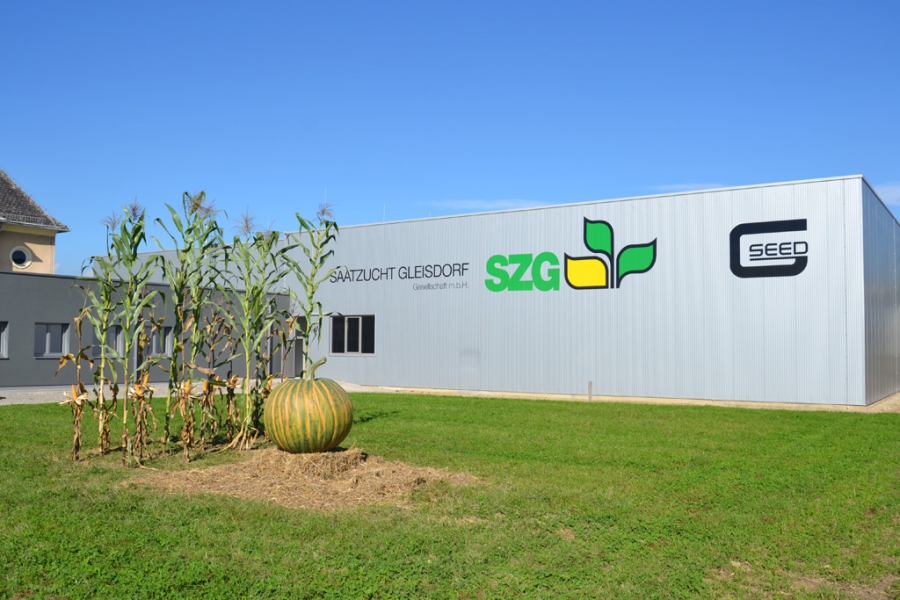 In the years 2012 - 2014 significant investments were made in Gleisdorf. Overall 1.8 million euros were invested in the following new constructions: In the years 2012 - 2014 significant investments were made in Gleisdorf. Overall 1.8 million euros were invested in the following new constructions: A new cold storage for breeding material and basic seed 400 m2 (2.400 m3) for 700 tons of storage capacity
|
2014 - 2016
OIL PUMPKIN
 The Gleisdorf Seed Breeding Institute has strongly expanded its oil pumpkin crop breeding activities over the last few years. For this purpose, special research projects together with partners including IFA Tulln, the region of Styria and the Wies Regional Research Centre were set-up. Every year approximately 7000 plants are hand pollinated, innumerable virus tests are carried out and efficiency and suitability testing of new varieties are organized on 10 hectares of land in Styria, Lower Austria and Burgenland. The hybrid varieties, Diamant and Express were the first virus tolerant hybrids to be licenced. New, high productivity oil pumpkin varieties are set to be licenced in the near future. Currently the variety GL Rustikal is the main variety in oil pumpkin growing. The Gleisdorf Seed Breeding Institute has strongly expanded its oil pumpkin crop breeding activities over the last few years. For this purpose, special research projects together with partners including IFA Tulln, the region of Styria and the Wies Regional Research Centre were set-up. Every year approximately 7000 plants are hand pollinated, innumerable virus tests are carried out and efficiency and suitability testing of new varieties are organized on 10 hectares of land in Styria, Lower Austria and Burgenland. The hybrid varieties, Diamant and Express were the first virus tolerant hybrids to be licenced. New, high productivity oil pumpkin varieties are set to be licenced in the near future. Currently the variety GL Rustikal is the main variety in oil pumpkin growing. Breeding aims:
|
SOYA BEAN
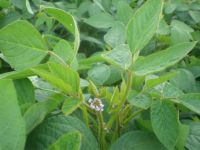 For soya beans, the development of new varieties in the ripening groups 000 to 0 has the highest priority. The newest varieties produced by the soya bean breeding program are GL Hermine and GL Melanie - an intensive breeding collaboration is in place with DSP (Switzerland) and the University of Natural Resources and Applied Life Sciences in Vienna. Saatzucht Gleisdorf is also a member of Donau Soja for the promotion of soybean cultivation in Central Europe. For soya beans, the development of new varieties in the ripening groups 000 to 0 has the highest priority. The newest varieties produced by the soya bean breeding program are GL Hermine and GL Melanie - an intensive breeding collaboration is in place with DSP (Switzerland) and the University of Natural Resources and Applied Life Sciences in Vienna. Saatzucht Gleisdorf is also a member of Donau Soja for the promotion of soybean cultivation in Central Europe.Breeding aims:
|
FIELD BEAN
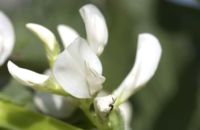 Three new high capacity multicoloured blossoming field bean varieties from the Gleisdorf Seed Breeding Institute - Alexia, Gracia and Julia - were licenced in 2007. Through continuous breeding work, the normally elongated plant form was modified to produce a more compact and stable plant type. The variety selection resulted from crossings of high yielding and disease resistant genotypes. Saatzucht Gleisdorf is an important cooperation partner in the new EU research project of LEGATO. Three new high capacity multicoloured blossoming field bean varieties from the Gleisdorf Seed Breeding Institute - Alexia, Gracia and Julia - were licenced in 2007. Through continuous breeding work, the normally elongated plant form was modified to produce a more compact and stable plant type. The variety selection resulted from crossings of high yielding and disease resistant genotypes. Saatzucht Gleisdorf is an important cooperation partner in the new EU research project of LEGATO.Breeding aims:
|
MAIZE BREEDING PROGRAM
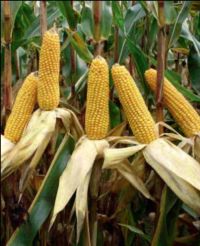 The breeding of inbred lines and hybrids is carried out in a ripening range of FAO 220 to 400.The main focus is the development of productive grains and silo maize varieties for the Austrian producing region but also for western Europe and the central European zone. Approximately 90 000 hand pollinations are performed in the Gleisdorf breeding nursery each year. The performance of the new crosses is then tested on approximately 30 000 test beds at 18 sites in Austria and Germany. Alongside the development of proprietary inbred lines and the maintenance of the comprehensive gene bank, numerous collaborations have been set up with European maize breeders. To enable the exploitation of a second growing season, the Gleisdorf Seed Breeding Institute uses a winter breeding garden in Chile and Mexiko. The development of inbred lines using the double haploid system was started some years ago. After retirement of DI Reinhard Schultze, DI Jure Kolaric has been the breeding manager for Maize since 2012. The breeding of inbred lines and hybrids is carried out in a ripening range of FAO 220 to 400.The main focus is the development of productive grains and silo maize varieties for the Austrian producing region but also for western Europe and the central European zone. Approximately 90 000 hand pollinations are performed in the Gleisdorf breeding nursery each year. The performance of the new crosses is then tested on approximately 30 000 test beds at 18 sites in Austria and Germany. Alongside the development of proprietary inbred lines and the maintenance of the comprehensive gene bank, numerous collaborations have been set up with European maize breeders. To enable the exploitation of a second growing season, the Gleisdorf Seed Breeding Institute uses a winter breeding garden in Chile and Mexiko. The development of inbred lines using the double haploid system was started some years ago. After retirement of DI Reinhard Schultze, DI Jure Kolaric has been the breeding manager for Maize since 2012. |
SERVICES
Services: • Basis seed production • Maintenance breeding • Production of experimental hybrids • Yield tests • Observation tests and disease rating • Exchange testing • Selective breeding tasks |
